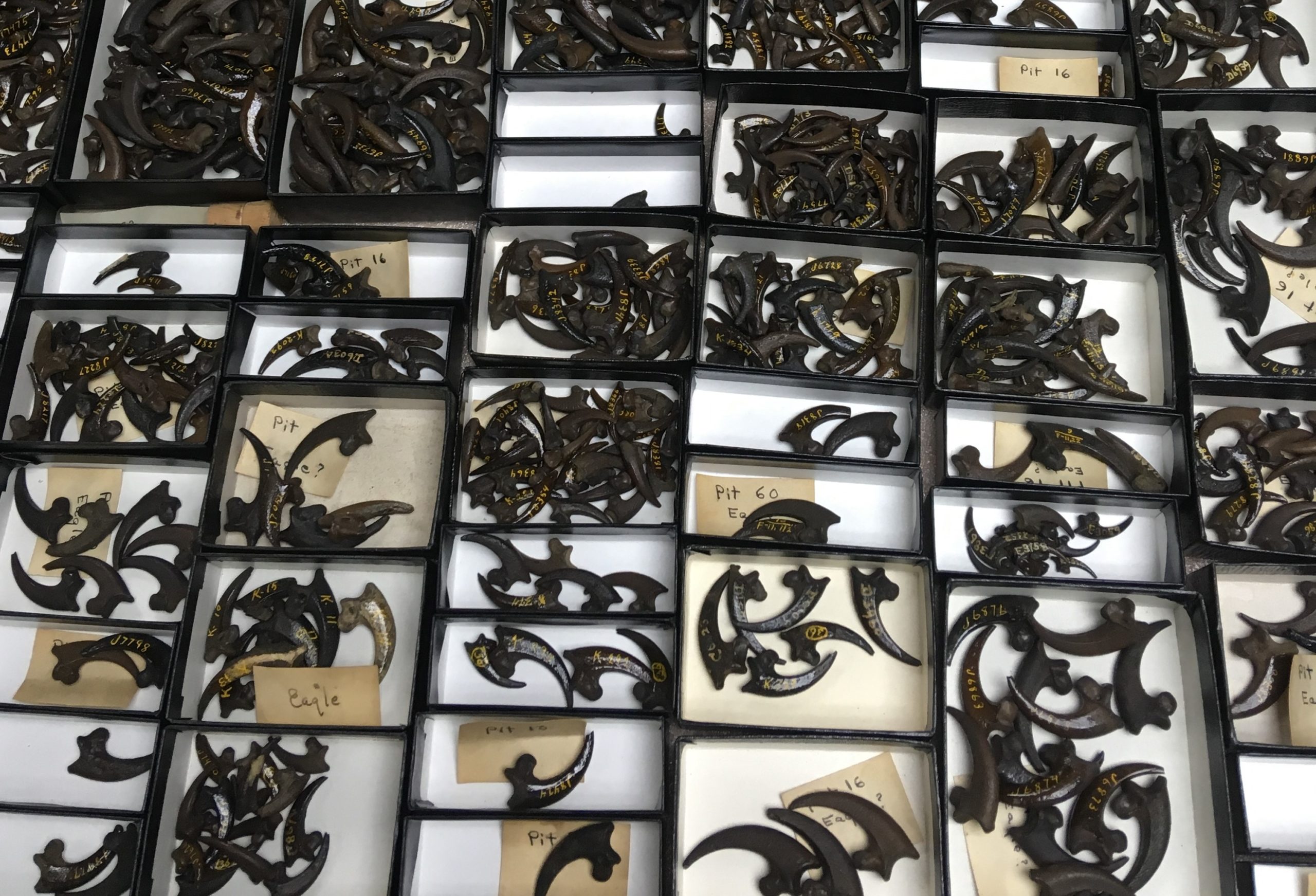This is the second in a series of posts running throughout 2020 profiling work done by recipients of last year’s Student & Postdoc Research Awards. View the full series here.
Oona Takano’s research focuses on how something big — the Pleistocene extinctions of megafauna such as woolly mammoths — affected something very small: the toe bones of Bald and Golden eagles.
Between around 50,000 and 11,000 years ago, many large mammals and other animals in North America went extinct, including mammoths and giant ground sloths as well as predators like short-faced bears and saber-toothed cats. Golden Eagles and Bald Eagles, familiar to North American birdwatchers today, lived alongside those giants and were among the species that survived after they had vanished. The question Oona is trying to address is how this massive shift in North American ecosystems affected eagles’ diets and whether their bodies changed over time as a result.
Oona, a PhD student at the University of New Mexico, received a Student Research Award from AOS in 2019 that partially funded her research trips to California to study eagle toe bones held in natural history collections at the La Brea Tar Pits Museum and UC Berkeley. “First I had to identify a lot of toe fossils. Unsurprisingly, people haven’t really bothered to look at toes that much, which is why it’s a nice niche for me to explore,” says Oona. “At UC Berkeley, most of the small bird elements were actually kept in their bell tower, and so I had to go up there with another grad student and we pulled out all these dusty boxes that nobody had touched since the 1920s.”

Both the size and shape of fossil toe bones and talons can provide important clues about what eagles were eating. “In birds like Golden Eagles that are mostly terrestrial predators, the claw shape has been shown to indicate their feeding niche. Basically the idea is that if you have a more down-curved talon, then you’re more of an active predator rather than a scavenger,” says Oona. “If you look at something like a vulture, they have much flatter claws, because they’re just walking around on the ground a lot and not actually grabbing prey.”
After identifying which eagle species each fossil was from, Oona took photographs and careful measurements. She presented a poster at last summer’s AOS meeting in Anchorage to show off some preliminary results. “What I’ve found is that Golden Eagles’ toe size has increased from the Pleistocene to today, which fits with the idea that once there was less competition, they became the top predators,” says Oona. Although the overall body size of Golden Eagles also increased, their toes got bigger even faster. This could mean that they were adapting to capture larger prey. “Bald Eagles have a very different diet and feeding behavior, relying much more on scavenging, and they’ve actually stayed the same.”
Oona is currently in the second year of her PhD work, and the data she’s collected so far will be the basis of the first chapter of her dissertation. She next hopes to study changes in eagles’ diets more directly by extracting collagen from fossils and analyzing the ratios of stable isotopes of various elements, which vary depending on what the birds were eating. “I’m hoping to find out whether eagles were scavenging more in the Pleistocene compared to today. This would mean that fossil eagles would have a stable isotope signature consistent with a diet containing more large herbivores, which they would have eaten as carcasses, compared to modern eagles having a more purely predatory diet made up of small to medium prey species,” explains Oona. “The thing with the tar pit fossils is that you have to do a lot of cleaning steps because of all the tar, so that’s something I’m anticipating.”
Did identifying, measuring, and photographing more than 900 tiny toe bones ever get tedious? “Let’s just say I listened to a lot of podcasts,” says Oona with a laugh. “But I definitely felt very lucky to be working with these specimens. For paleontological work, being able to get sample sizes in the tens or the hundreds is just awesome.”
